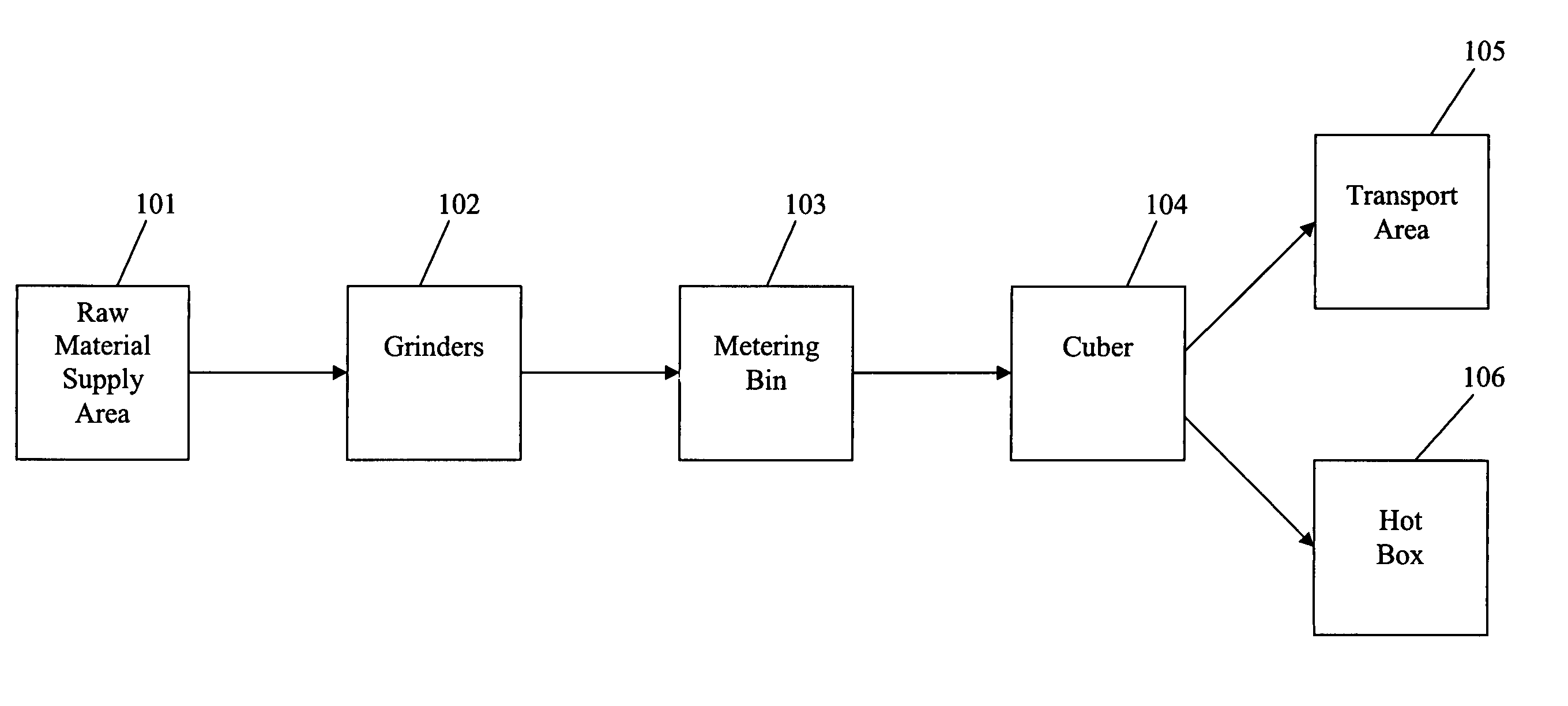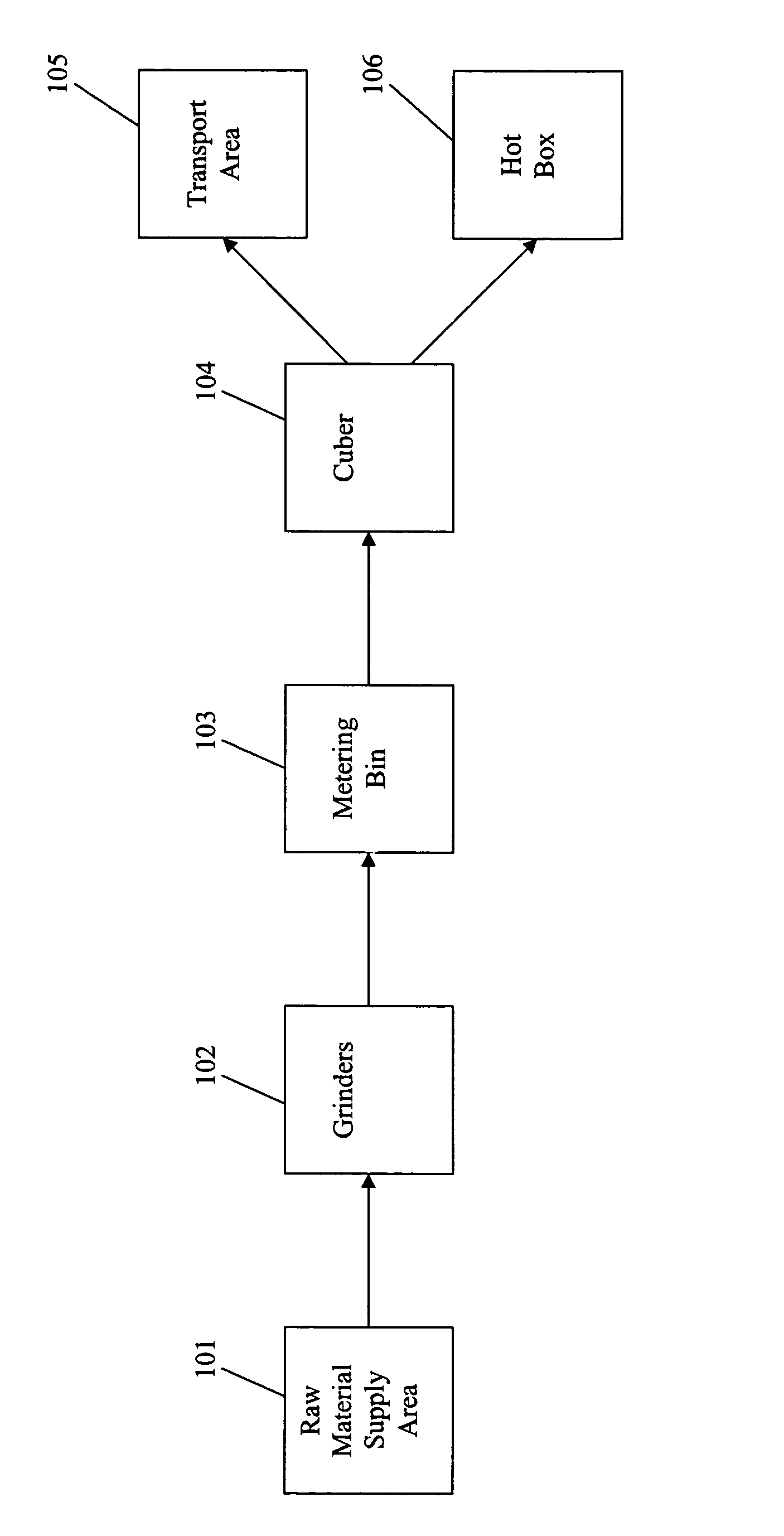Method for manufacturing combustible products
- Summary
- Abstract
- Description
- Claims
- Application Information
AI Technical Summary
Benefits of technology
Problems solved by technology
Method used
Image
Examples
Embodiment Construction
[0017]FIG. 1 shows a flow diagram of the process of the present invention. At the raw material supply area 101, feedstock is brought into the facility. The feedstock can consist, for example, of non-saleable waste materials from paper mills, such as disposable diapers, hygiene pads, hospital gowns and the like. The feedstock may be made up of thermoplastic material and cellulosic material. The thermoplastic material can be practically any available thermoplastic such as, but not limited to, polystyrene, polyethylene, polypropylene, acrylonitrile-butadienestyrene, acetal copolymer, acetal homopolymer, acrylic, polybutylene, and combinations thereof. However, thermoplastic materials most useful in the present invention are illustrated generally by the polyolefins such as polyethylene, polypropylene, polybutylene, and the like. Other thermoplastic resins are suitable so long as they have softening properties similar to the polyolefins, whereby they serve as lubricants for processing th...
PUM
| Property | Measurement | Unit |
|---|---|---|
| Temperature | aaaaa | aaaaa |
| Pressure | aaaaa | aaaaa |
| Size | aaaaa | aaaaa |
Abstract
Description
Claims
Application Information
 Login to View More
Login to View More - R&D
- Intellectual Property
- Life Sciences
- Materials
- Tech Scout
- Unparalleled Data Quality
- Higher Quality Content
- 60% Fewer Hallucinations
Browse by: Latest US Patents, China's latest patents, Technical Efficacy Thesaurus, Application Domain, Technology Topic, Popular Technical Reports.
© 2025 PatSnap. All rights reserved.Legal|Privacy policy|Modern Slavery Act Transparency Statement|Sitemap|About US| Contact US: help@patsnap.com


